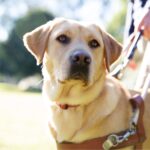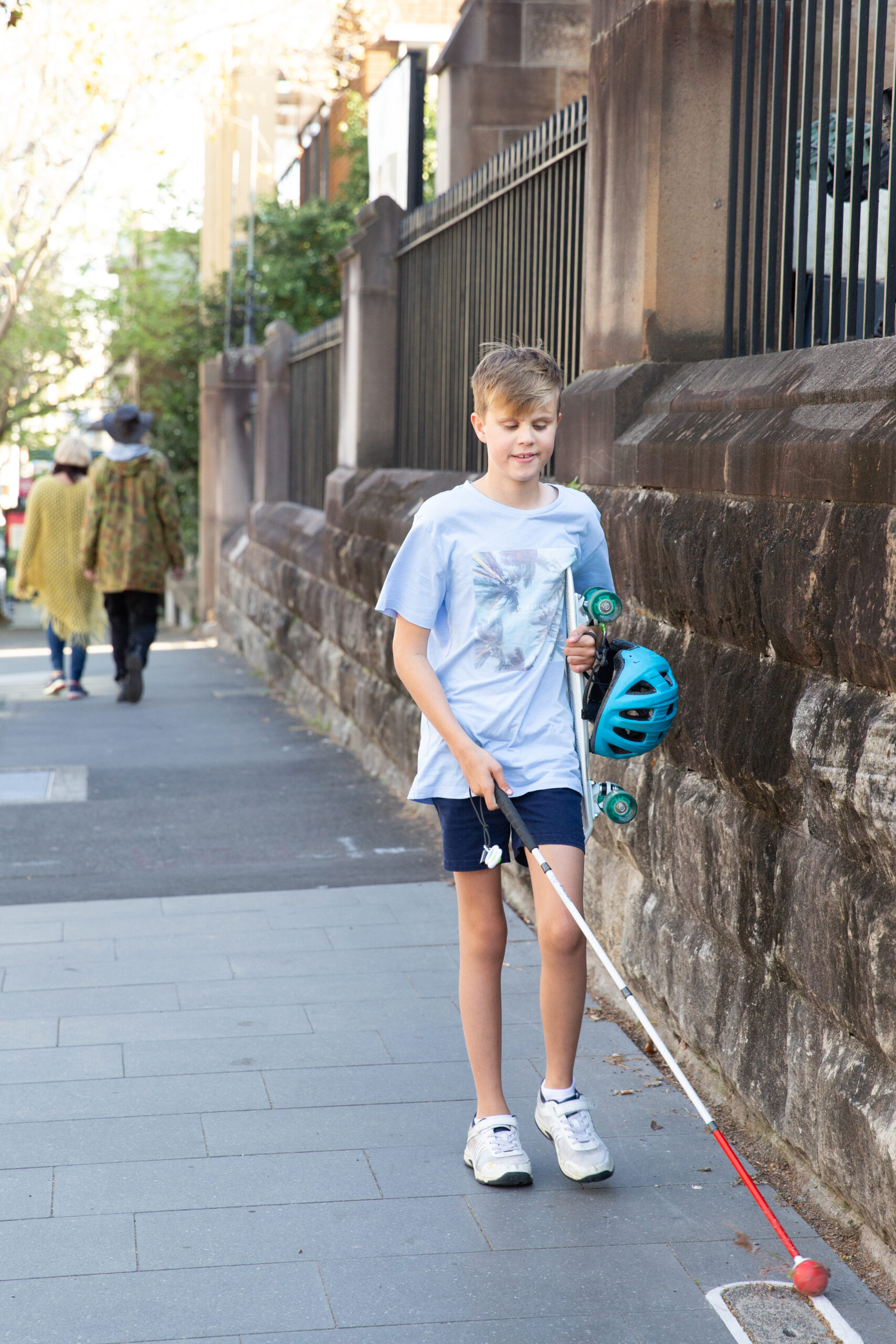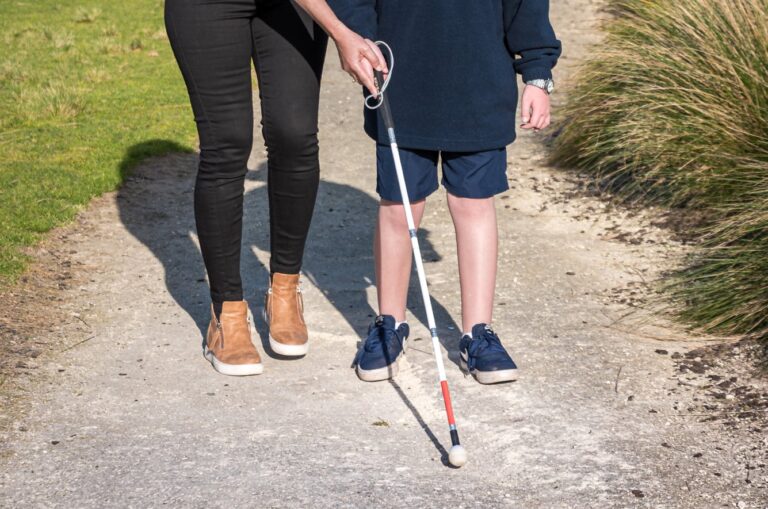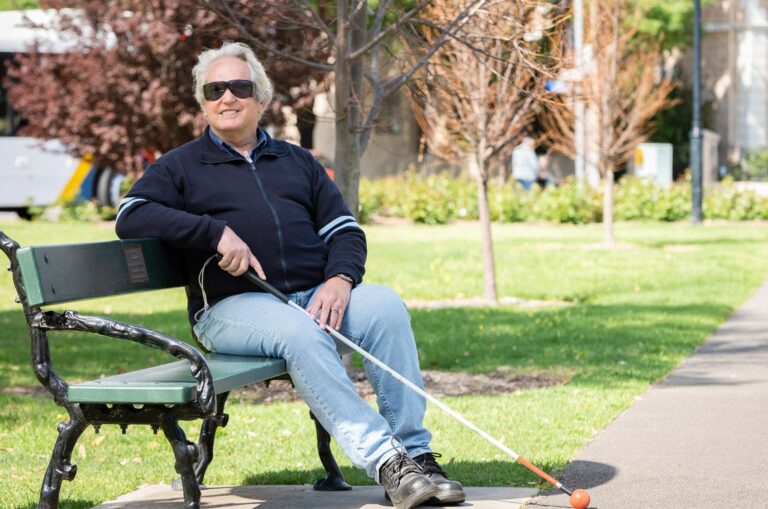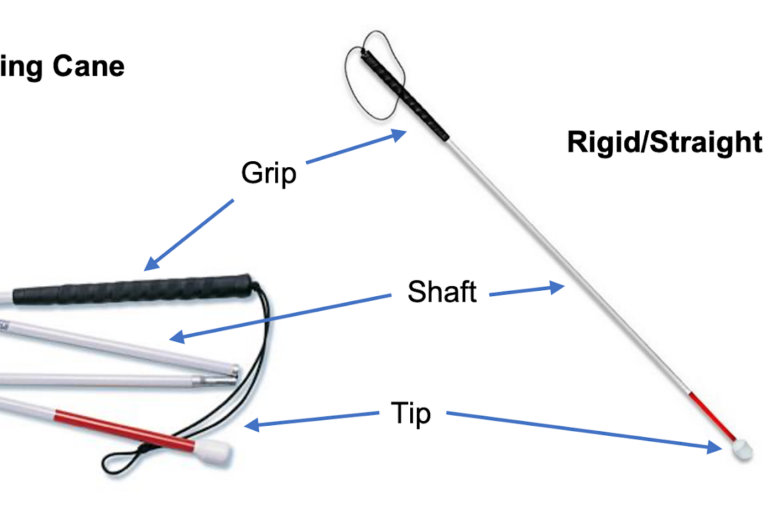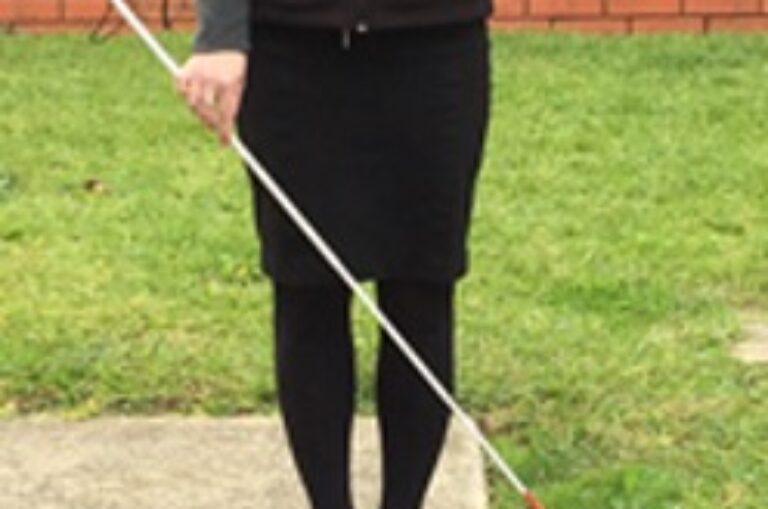Common types of tips you can attach to long canes
A cane tip is the rubber or ceramic part can be attached to the end of a long cane. It’s the part of the cane that comes into contact with the ground, and so is an essential component of the equipment, helping a person with low vision or blindness to detect obstacles and navigate their surroundings safely.
The type of tip used on a white cane can vary depending on the user’s needs and the environment they’re navigating. This article doesn’t recommend one type above another, but instead is an introduction to some of the common tips in Australia.
Before we start, we should mention that there are different brands of canes and cane tips. Again, this article isn’t attempting to rank or rate them. It is, however, important to keep in mind that a tip made by one manufacturer may not fit on a cane made by another.
The pencil tip
This is a small, very common tip that’s really lightweight. It gives you lots of feedback, helping you determine even small changes in the ground you’re travelling upon.
If there’s a downside to this tip, it’s that it can sometimes get caught on the surface you’re navigating. For that reason, if you’re using this tip you’ll want to use a lightweight feather touch. We often find that a person who prefers the two-point touch method (as opposed to constant contact) of cane use also prefers this kind of tip.
The pear tip and marshmallow tip
These tips are very similar to the pencil tip but are a little bit wider in the base, which is how they get their names. One looks like the fruit and the other looks a bit like the lolly.
Like the pencil tip, both of these tips are lightweight and will give plenty of feedback. But the pear and marshmallow tips are well-suited to both two-point touch and constant contact methods.
What’s the difference between these two tips? Not a great deal–they’re different companies’ names for tips that serve essentially the same purpose as one another.
The ball race tip
This round tip, a little bit smaller than a golf ball, is designed to glide across the surface you’re travelling on, rotating as you move ahead.
Because it rotates, it tends to pick up a little bit less feedback than the pencil, marshmallow and pear tips. However, you may find that because it glides, it catches on the ground less than its lighter counterparts.
Some people find that maintaining a steady cane arc is more difficult with a ball race tip, simply because when you use a rotating tip, the cane tends to move a little bit further from left to right than it would with a fixed tip.
The rural tip
Similar in shape to the ball race tip, the rural tip is fixed; it doesn’t rotate as you use it.
Like the ball race tip, it provides less feedback than other tips, but is less likely to catch on any bumps you come across in your travels.
The Supaball rolling tip
The largest cane tip you can find is called the Supaball, and it’s produced by a company called Ambutech.
It’s almost the size of a tennis ball and is heavier than all the tips mentioned above. It also provides less feedback than some other tips, but is well-suited to travelling for longer distances, especially if the surface is relatively smooth.
The Bundu Basher
Another brand name, this tip is really unique. It’s thin, round-edged and shaped almost like a U. When you add it to the end of your cane it makes it look a little bit like a hockey stick.
It’s designed specifically for outdoor use, including bushland and heavy grassland, and its manufacturer recommends using it with a figure-eight method. It can be really useful in certain situations, but does require a bit of extra Orientation & Mobility Specialist training than would be the case with many of the tips mentioned above.
The ceramic cane tip
Another tip exclusive to Ambutech, the ceramic cane tip is shaped like a half a ball; the rounded half is the part that touches the ground.
It provides superior audio feedback from the environment with which it’s connecting. You’ll get unique sounds from different surfaces, helping you identify where you are and how the surface beneath you might have changed.
It’s small, so can get caught, but is well-suited to all cane use methods.
If you’d like help with cane techniques, you might find our article on tips for using a cane useful.
If you’d like some training or advice, you can get in contact with an Orientation & Mobility Specialist.
Read more about canes
Ready to continue?
Seems like you have filled this form earlier. Let’s pick up where you left off.
